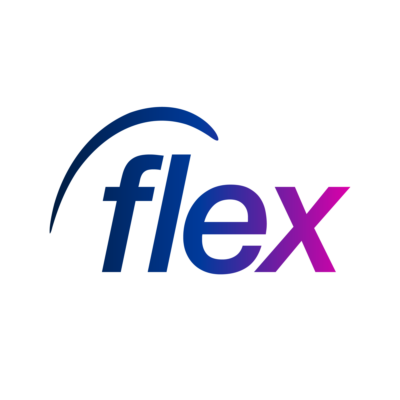
The contingent workforce is set to comprise nearly half of enterprise talent by 2025, signalling a fundamental shift in how organisations approach workforce management. As this segment grows, businesses are turning to advanced technologies to tackle challenges like visibility, compliance, cost efficiency, and talent acquisition. For HR, procurement, and operations leaders, adopting new solutions has become a strategic priority to ensure effective management of this increasingly critical workforce.
The evolution of contingent workforce management
From tactical to strategic
Historically, contingent workers were often seen as a temporary fix, brought in to address short-term staffing gaps or seasonal demand. However, this perspective has shifted dramatically. Today, contingent workers are recognised as an integral part of total workforce planning. Businesses now view this workforce not only as a cost-saving measure but also as a source of specialised skills and flexibility that can drive long-term growth.
Outdated legacy systems
Traditional approaches to managing contingent workers often relied on siloed systems and manual processes. These legacy systems are no longer considered efficient, with common challenges including a lack of coordination between HR, procurement, and operations leads, inconsistent or incomplete data, and limited scalability. These limitations only serve to highlight the urgent need for integrated solutions that provide greater transparency and control.
Digital transformation — essential
Digital transformation is a must. Businesses that fail to modernise risk falling behind competitors who are already using advanced technologies to optimise their contingent workforce strategies. According to a Forbes article on recruitment strategies, companies that adopt digital tools for workforce management see measurable improvements in operational efficiency and talent acquisition.
Core technologies revolutionising contingent workforce management
Vendor Management Systems
Modern VMS platforms centralise and streamline contingent workforce processes, offering features such as supplier management, worker onboarding, time tracking, and analytics. These systems provide a single source of truth, enabling businesses to manage their contingent workforce with greater efficiency and transparency.
Key benefits of VMS:
- Supplier management: Simplifies vendor relationships and ensures accountability.
- Worker onboarding: Automates compliance checks and documentation.
- Time tracking: Provides accurate, real-time data on worker hours.
- Analytics: Delivers insights into workforce performance and cost trends.
- Intelligent matching: Matches workers to roles based on skills, experience, and availability.
- Predictive analytics: Forecasts workforce needs by analysing historical data and market trends.
- Automated workflows: Reduces administrative burden, allowing HR teams to focus on strategic tasks.
- Improved communication: Simplifies coordination between managers and workers.
- Enhanced flexibility: Allows workers to manage shifts and availability on the go.
- Real-time updates: Ensures everyone has access to the latest information.
- Enhanced visibility: Comprehensive insights into workforce performance.
- Informed decisions: Data-backed strategies for cost control and talent acquisition.
- Proactive planning: Ability to anticipate future workforce needs.
- Reduces time-to-hire by identifying bottlenecks.
- Improves resource allocation through data-driven insights.
- Strengthens compliance by centralising documentation and processes.
- Automating administrative tasks to reduce overheads.
- Standardising rates to eliminate rogue spending.
- Using analytics to optimise budgets.
- Reduces legal risks by ensuring adherence to labour laws.
- Simplifies audits with centralised documentation.
- Automates worker classification to avoid misclassification penalties.
- Uses AI to match candidates with roles based on skills and experience.
- Tracks performance metrics to identify top talent.
- Provides real-time feedback to improve worker quality.
Companies that adopt a strong VMS can achieve significant efficiency gains and cost savings.
AI and machine learning applications
Artificial intelligence is completely changing how businesses manage their contingent workforce. By using intelligent matching, predictive analytics, and automated workflows, AI ensures that the right talent is placed in the right roles at the right time.
How AI adds value:
Mobile-first platforms
With a distributed workforce, mobile accessibility is critical. Mobile-first platforms empower both managers and workers by providing real-time access to schedules, time tracking, and communication tools.
Advantages of mobile platforms:
Advanced analytics and business intelligence
Data-driven decision-making is of paramount importance when it comes to contingent workforce management. Advanced analytics tools provide real-time dashboards and reporting capabilities, enabling organisations to see which workers are needed when, and identify trends.
Key benefits:
Key benefits of technology-enabled contingent workforce management
Enhanced visibility and control
Technology provides organisations with a 360-degree view of their contingent workforce, from worker performance to cost allocation.
Why visibility matters:
Cost optimisation and efficiency
Cost control remains a top priority for organisations managing a contingent workforce. Technology helps identify cost-saving opportunities by automating processes and standardising rates.
Key cost-saving strategies:
According to Indeed Flex’s resource on agency networks, organisations can achieve a 10-20% reduction in contingent labour costs by adopting technology-driven solutions.
Compliance risk mitigation
Dealing with complex regulations for contingent workers can present a significant challenge. Technology simplifies compliance through automated checks, documentation management, and worker classification tools.
Compliance benefits:
For a deeper dive, the Conexis VMS blog offers best practices for compliance in contingent workforce management.
Talent quality and acquisition
Technology enhances the quality of contingent talent by improving screening, matching, and performance tracking. This is especially important when it comes to addressing talent shortages.
How technology improves talent acquisition:
Indeed Flex’s resource on combating talent shortages outlines strategies for attracting and retaining high-quality contingent workers in a competitive market.
Give your workforce strategy a much needed boost
Indeed Flex empowers businesses to seamlessly manage their contingent workforce by combining cutting-edge technology with a human-first approach. Discover how our solutions can reduce costs, maintain the quality of your workforce, and provide the visibility you need—request a demo today.








